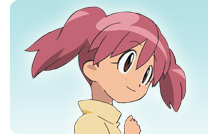
5月2日 省思雜記-創造思考教學法(Creative thinking)
壹、上課內容摘述
一、創意教學法是由威廉‧戈登(William J. J. Gordon)和他的同伴在1961年設計出來的,它是一種對創造力發展的有趣的實驗。
二、創造力是潛藏在人類腦中的金礦,但常是開採不足。(Osbom, 1953)
三、創造思考的本質:
(一)屬於高層次認知的歷程。
(二)運作過程貴能求新求變。
(三)創造力是認知與情意之結合,多元思考歷程並用之結果。
(四)強調無中生有,但須以知識經驗為基礎。
(五)是一種無目的性行為。
(六)創造行為如何發生仍有待研究探討。
(七)創造性思考可經由教育訓練而予以增強。
四、創造思考運作的歷程:
(一)Wallas提出:
1.準備階段
2.孕育階段
3.豁然階段
4.驗證階段
(二)Torrance提出
1.準備階段
2.試探階段
3.脫身於外
4.頓悟階段
5.驗證階段
五、常見的創造教學的策略
(一)解凍、歸零思考法
(二)腦力激盪法:1937年由Osborn發明
(三)創造式問題解決思考術:Osborn逾1948年提出,Parnes等人進一步修正。
(四)檢核法:針對問題列出一份清單,寫出解決問題或改革事物的可能方向,然後逐一推敲。
(五)屬性列舉法:用於對物品之改革創新、歷程強調觀察、分析及發現關係。
(六)強迫組合:1958年C. S. Whiting發展,用以發明新觀念。
(七)型態綜合思考術
(八)分合法(Synectics):1956年William Gordon所提倡。
分合法常見三個類推技巧:
1.擬人化的類推比擬。
2.直接的類推
3.濃縮的衝突
(九)自由聯想:建立在行為主義實驗心理學的基礎之上。
貳、對我的衝擊
以往台灣的教學方式,一向都是以填鴨式的教學,將課本的內容硬塞到學生的腦子裡,在這種教學背景下,造成台灣學生主動思考的能力被限制住了,也因此台灣的學生一向被批評太過死板,不知變通。而現在,新的一代,也就是俗稱的七年級生或是八年級生,雖然說是被稱為富有創意的新一代,但我卻不認為這種創意是來自學校的教育,反而是來自電視節目或是網路的教導。從自身以往的經驗來看,其實每個人都是充滿了想法和創意的,但以台灣以往的教學方式來看,這些想法和創意,都是對老師課堂教學造成干擾的行為,所以台灣的學生從小便經過了無數次的壓抑,我相信這對台灣學生的創造力和獨自思考能力的培養,有著相當大的傷害。因此創造思考教學法這種鼓勵學生發展創造力的教學法,就我認為,這樣的學習才是有意義的。而且,如果教學有創意,學生便會對學習產生興趣;而學生對學習有興趣,教學的效果便容易產生顯著的成效。對老師來說,創意教學能讓老師活化教學,使學生喜歡上課,連帶的也可以讓老師在課堂上更容易掌握住學生。
參、未來使用上的規劃
就公民教育來說,我想創意思考教學法是一個蠻適合的教學法。因為公民教育中,存在許多社會規範相關的教學內容,在教學上,也常會有機會使用社會時事來作為相關課程的教學輔助教材,因此使用創意思考教學法,可以使學生自行思考,而不會只是單純的吸收課本上的內容。
肆、教育文摘
Creativity in the Classroom: Schools of Curious Delight (3rd ed.) Alane Jordan Starko.
I thought I knew a lot about creativity, but researchers on creativity claim that they don't know enough, and what they do know is overshadowed by differences in thinking and in opinions. However, from studies of "very" creative adults, a list of characteristics indicating creativity offers a starting point for working with children. The problem is that when we study these characteristics or "signs" of creativity in children, questions linger as to whether they will actually become successful, creative adults. It is troublesome, too, for teachers who may wonder how to identify children who are "more" or "less" creative and if there is a "creative thinking moment" when the teacher should intervene. Starko may not tell you everything you need to know, but once you've read this book, you will be more creative, you will have access to teaching strategies that help students be more creative, and you will surely notice a significant difference when you intentionally introduce a creative thinking component to a lesson.
The text begins with a comprehensive overview of research and theory on the creative process and developing creativity. The author describes the characteristics of "creative" individuals and explains Amabile's model emphasizing the importance of intrinsic motivation. "People will be most creative when they feel motivated primarily by the interest, enjoyment, challenge, and satisfaction of the work itself . . . and not by external pressures" (Amabile, 1.989, quoted in Starko, p. 168). Starko agrees that "[a]ll the skills, habits, and abilities in the world will not ensure that an individual will persist with a task unless he or she wants to do so" (p. 168), and many of the suggested learning activities and instructional strategies in this book focus on "habits of mind" and thinking skills that can increase intrinsic motivation. I suppose that readers should consider their own levels of intrinsic motivation before attempting to encourage creativity in others.
Starko suggests that the inductive method supports creativity when teachers allow students to "use information and creative thinking skills to draw conclusions, solve problems, or consider alternatives" (p. 180). If you have not heard of SCAMPER, synectics, or de Bono's 6 hats of thinking, be prepared for some surprises. Metaphors and creative dramatics are a bit more complicated, but beneficial to the creative spirit.
In Chapter 6, the author discusses finding and solving problems in the content areas. It is good to keep in mind that "[i]nductive lessons provide opportunities for thinking independently, taking risks, and generating original ideas" (p. 334). This kind of inquiry results in messy thinking and unconventional "communities of learners." Chapters 7 and 8 discuss intrinsic motivation and organizing for creative endeavors. The final chapter asks and answers assessment questions. Of course, "[m]easuring something is extremely difficult if we are not sure what it is" (p. 422). Nevertheless, the risk of failure, from a creative point of view, offers a challenge for learning and should be rewarded.
Still, if we don't extend our current thinking and encourage children to think more creatively, we may inhibit their natural tendencies, as some believe ". . . there is a process that generates creativity-and you can learn it. And you can make it habitual" (Tharp, 2003, p. 9). Near the end of her book, Starko reminds us that "[l]earning about creativity can be like the blind men and the elephant. . . . The challenge I leave with you," she writes, "is to explore and to help your students explore as many aspects of this pachyderm, creativity, as you can" (pp. 456-457).
I have to mention that the Appendix contains 10 problem-solving lessons ready for your delivery. You can try any or all of these exercises in a variety of classroom environments or change and modify them to suit your learners. A word to the wise-intentionally adding creativity can change the way teaching and learning happen in your classroom. It is a good idea to work with a colleague and to keep written records of your lessons and your reflections-at least your "revelations" will be visible.
文章定位:



